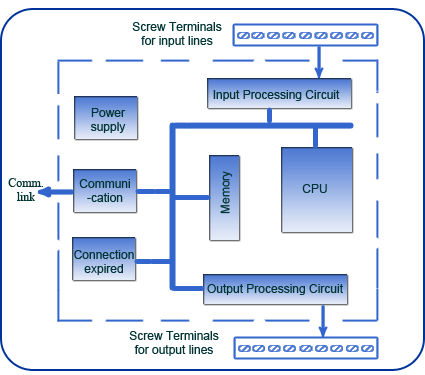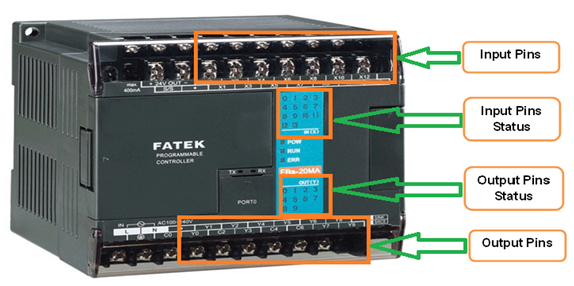Industrialization often used relays to control the manufacturing processes. The relay control panels had to be regularly replaced, consumed lot of power and it was difficult to figure out the problems associated with it. To sort these issues, Programmable logic controller (PLC) was introduced
Programmable Logic Controller ( PLC ) is a digital computer used for the automation of various electro-mechanical processes in industries. These controllers are specially designed to survive in harsh situations and shielded from heat, cold, dust, and moisture etc. PLC consists of a microprocessor which is programmed using the computer language.
The program is written on a computer and is downloaded to the PLC via cable. These loaded programs are stored in non – volatile memory of the PLC. During the transition of relay control panels to PLC, the hard wired relay logic was exchanged for the program fed by the user. A visual programming language known as the Ladder Logic was created to program the PLC

-
CPU – Keeps checking the PLC controller to avoid errors. They perform functions including logic operations, arithmetic operations, computer interface and many more.
-
Memory – Fixed data is used by the CPU. System (ROM) stores the data permanently for the operating system. RAM stores the information of the status of input and output devices, and the values of timers, counters and other internal devices.
-
I/O section – Input keeps a track on field devices which includes sensors, switches.
-
O/P Section – Output has a control over the other devices which includes motors, pumps, lights and solenoids. The I/O ports are based on Reduced Instruction Set Computer (RISC).
-
Power supply – Certain PLCs have an isolated power supply. But, most of the PLCs work at 220VAC or 24VDC.
Programming device – This device is used to feed the program into the memory of the processor. The program is first fed to the programming device and later it is transmitted to the PLC’s memory.
System Buses – Buses are the paths through which the digital signal flows internally of the PLC. The four system buses are:
· Data bus is used by the CPU to transfer data among different elements.
· Control bus transfers signals related to the action that are controlled internally.
· Address bus sends the location’s addresses to access the data.
· System bus helps the I/O port and I/O unit to communicate with each other.

Source: Electrical Basic School Blog